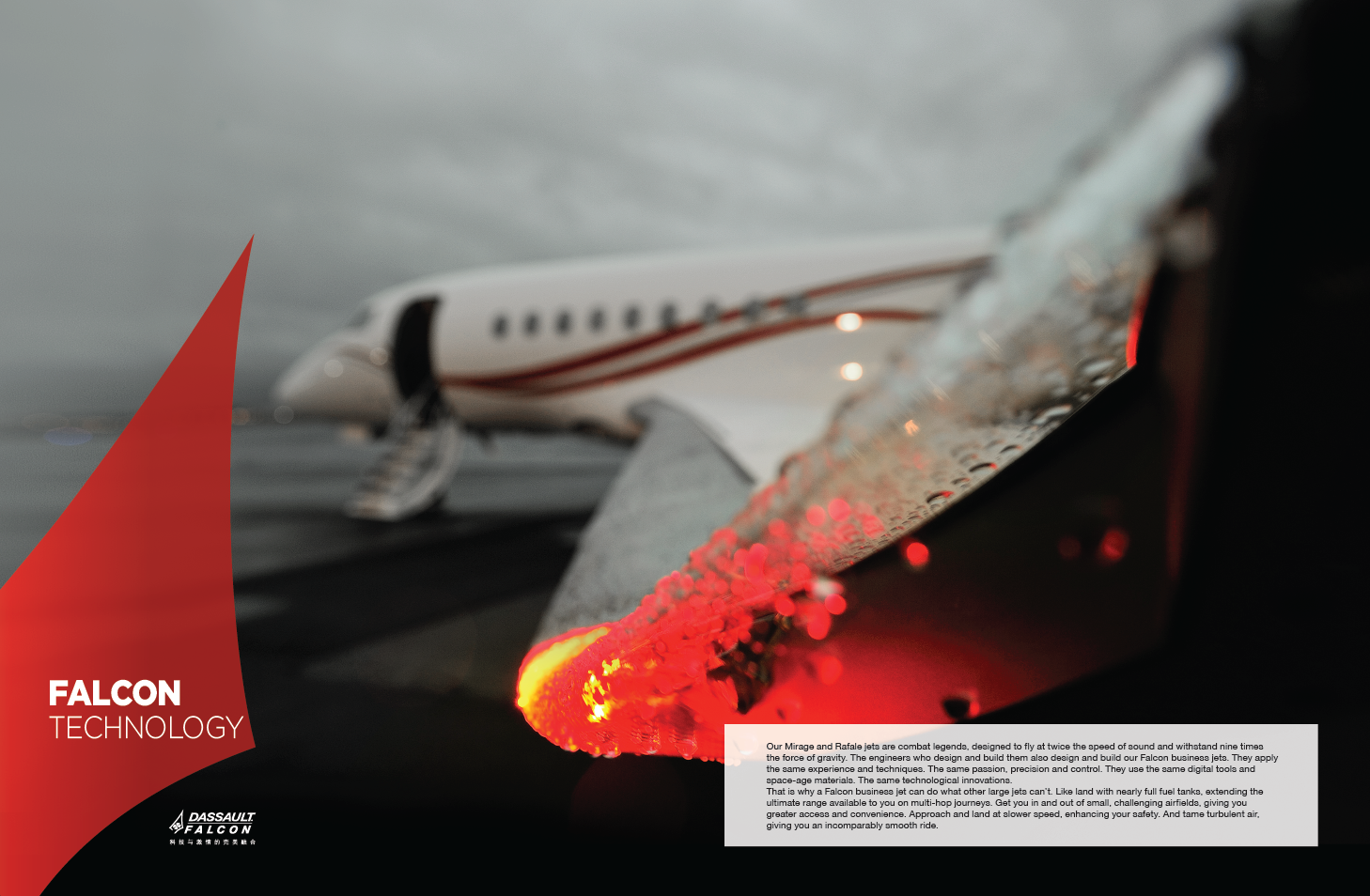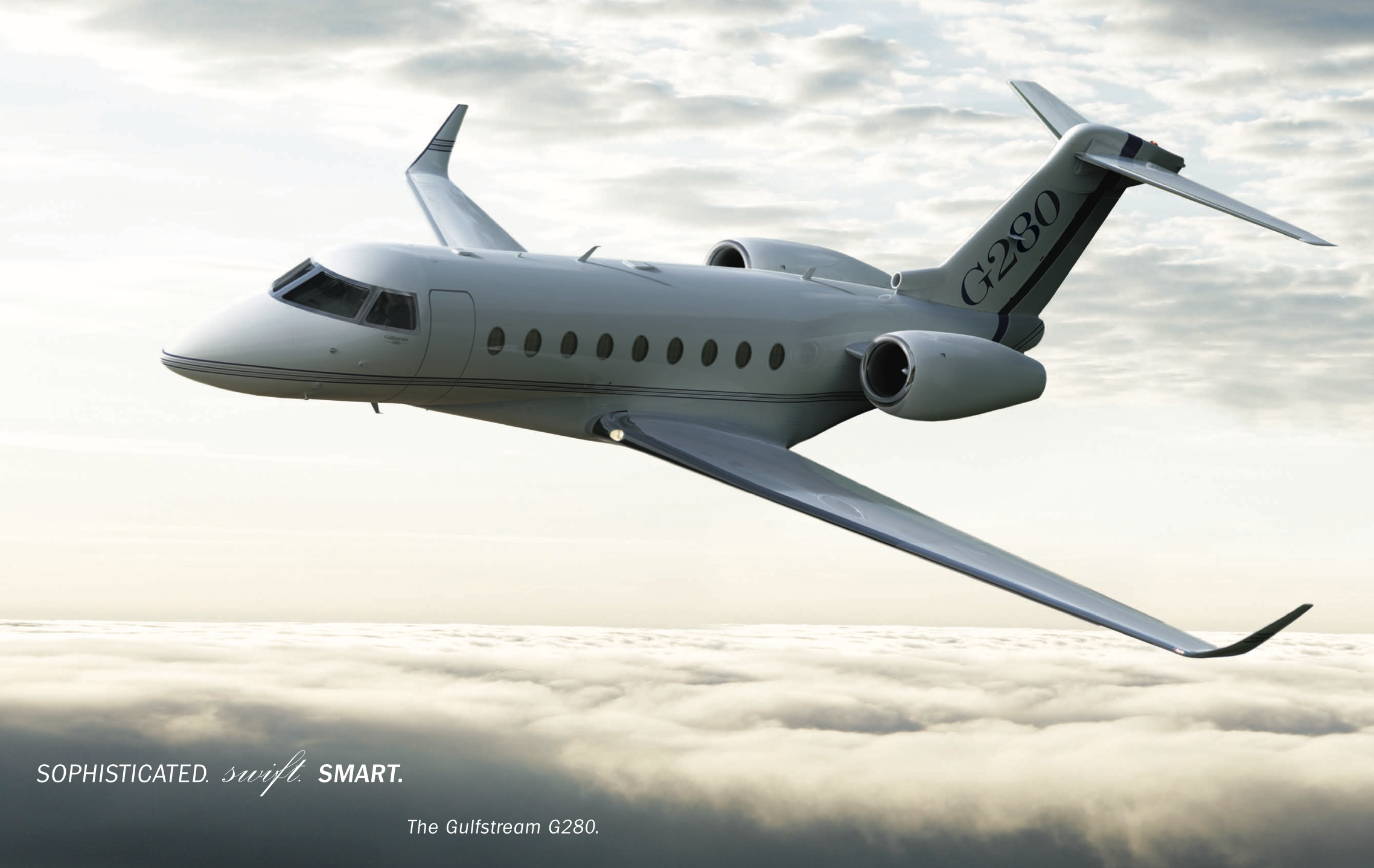FLEET BOOK
A DOCTRINE, IN PRINT
Created a print book for Dassault Falcon Jet - equal parts technical reference, brand artifact, and philosophical statement. Every element was guided by the founding ethos of Marcel Dassault: ‘For a plane to fly well, it must be beautiful.’
SITUATION
Dassault Falcon Jet needed a tool to support strategic sales - especially among sovereign and UHNW clients - where decisions hinge not just on specs, but on story, heritage, and design philosophy.
Competitors like Gulfstream leaned heavily on data. Falcon needed to lean on identity.
The opportunity: create a print artifact that functioned as technical documentation and brand doctrine.
TASK
Design a print piece that could operate on multiple levels:
SITUATION
Dassault Falcon Jet needed a tool to support strategic sales - especially among sovereign and UHNW clients - where decisions hinge not just on specs, but on story, heritage, and design philosophy.
Competitors like Gulfstream leaned heavily on data. Falcon needed to lean on identity.
The opportunity: create a print artifact that functioned as technical documentation and brand doctrine.
TASK
Design a print piece that could operate on multiple levels:
- A high-trust technical reference
- A luxury brand artifact
- A philosophical argument about beauty as engineering principle
The goal was to sell jets - but do it elegantly, through cultural pereception AND design fluency.
ACTION
— Concepted and designed the Fleet Book, an editorial-grade print piece structured around Marcel Dassault’s foundational belief: ‘For a plane to fly well, it must be beautiful.’
— Developed an architecture that married hard data with visual storytelling:
• Fleet specs, cabin configurations, and mission profiles
• Cinematic black-and-white aerials above China, the Himalayas, and Paris
• Premium materials (pearlescent stock, high-density print) to echo Falcon’s own craft
— Used design systems - information hierarchy, photographic cadence, visual rhythm - to align with Falcon’s aerodynamic aesthetic and strategic identity.
— Directed the visual tone to distinguish Falcon from rivals: abstract jet silhouettes, archival quotes, and refined graphic restraint gave the book weight without noise.
RESULT
The Fleet Book became more than a sales tool. It was a tactile argument - a piece designed to sit on the desks of ministers, billionaires, and procurement heads and say everything without speaking.
It helped position Falcon not just as a manufacturer, but as a design-led authority - blending French engineering, visual elegance, and global cultural fluency into a single, high-trust object, and contributing to a $6B annual pipeline growth through strategic brand positioning.
— Concepted and designed the Fleet Book, an editorial-grade print piece structured around Marcel Dassault’s foundational belief: ‘For a plane to fly well, it must be beautiful.’
— Developed an architecture that married hard data with visual storytelling:
• Fleet specs, cabin configurations, and mission profiles
• Cinematic black-and-white aerials above China, the Himalayas, and Paris
• Premium materials (pearlescent stock, high-density print) to echo Falcon’s own craft
— Used design systems - information hierarchy, photographic cadence, visual rhythm - to align with Falcon’s aerodynamic aesthetic and strategic identity.
— Directed the visual tone to distinguish Falcon from rivals: abstract jet silhouettes, archival quotes, and refined graphic restraint gave the book weight without noise.
RESULT
The Fleet Book became more than a sales tool. It was a tactile argument - a piece designed to sit on the desks of ministers, billionaires, and procurement heads and say everything without speaking.
It helped position Falcon not just as a manufacturer, but as a design-led authority - blending French engineering, visual elegance, and global cultural fluency into a single, high-trust object, and contributing to a $6B annual pipeline growth through strategic brand positioning.
FRONT+BACK COVER


INTERIOR SPREADS









( SIMILAR PRODUCT BOOK FOR DASSAULT COMPETITION GULFSTREAM)
What Gulfstream Shows:
- Literalism. Clean, competent, but obvious. Aircraft as product.
- Utility-First Language. ‘Engineered to impress. Day in and day out.’ Reads like a washing machine ad.
- Commodity Thinking. Front-three-quarter view, parked tarmac, warm light. It’s competent marketing—but it’s marketing.
- No Emotion, No Philosophy. These layouts speak to reliability, not meaning.
What Falcon Shows:
- Ideological Design. That jet-on-black image isn’t just dramatic—it’s intentional. A jet rendered like a cultural artifact, set against painterly light.
- Philosophical Anchoring. Marcel Dassault’s ethos is present in form and tone. Beauty as lift. Aesthetic as performance.
- National Signature. The Frenchness is quiet but unavoidable. Not just heritage, but design intelligence made visible.
- Strategic Sophistication. Use of color vs B&W. Abstract interstitials. Tactile stock. This isn’t sales—it’s seduction calibrated to decision-makers in aerospace, diplomacy, and defense.






Bottom Line:
Gulfstream markets aircraft.
Falcon markets design as doctrine.
Gulfstream markets aircraft.
Falcon markets design as doctrine.